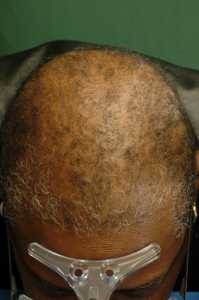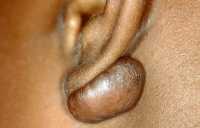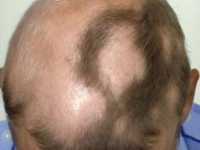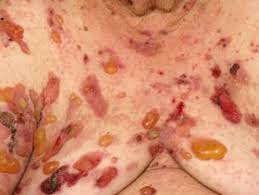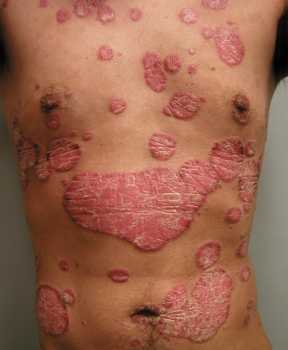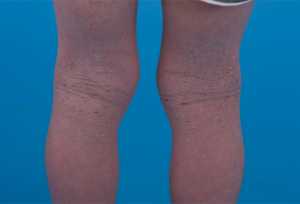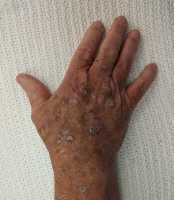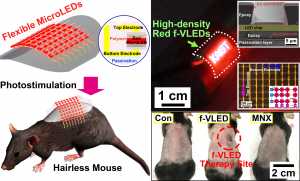Lilly Announces Phase 3 Results for Atopic Dermatitis Treatment
Antibiotics for Acne Alter Skin Microbiome
Kidney Transplant Patients at Increased Risk of Skin Cancer, Even After Graft Stops Working
 Donal J. Sexton, MD, PhD
Department of Nephrology and Kidney Transplantation
Beaumont Hospital
Royal College of Surgeons in Ireland
Dublin, Ireland
MedicalResearch.com: What is the background for this study? What are the main findings?
Response: Patients who receive a kidney transplant as treatment for end stage kidney disease are at risk of malignancy due to immunosuppression. In contrast to
other solid organ transplant types, when kidney transplants fail it is possible for recipients to return to dialysis. Immunosuppression is usually reduced or completely stopped when the allograft fails due to the risk of infection on dialysis.
We decided to investigate what the trajectory of risk for non-melanoma skin cancer and invasive cancers overall (composite group) looked like for patients who have received multiple consecutive kidney transplants with intervening periods of graft failure. We compared cancer risk during periods of allograft failure and periods of functioning kidney transplants. (more…)
Donal J. Sexton, MD, PhD
Department of Nephrology and Kidney Transplantation
Beaumont Hospital
Royal College of Surgeons in Ireland
Dublin, Ireland
MedicalResearch.com: What is the background for this study? What are the main findings?
Response: Patients who receive a kidney transplant as treatment for end stage kidney disease are at risk of malignancy due to immunosuppression. In contrast to
other solid organ transplant types, when kidney transplants fail it is possible for recipients to return to dialysis. Immunosuppression is usually reduced or completely stopped when the allograft fails due to the risk of infection on dialysis.
We decided to investigate what the trajectory of risk for non-melanoma skin cancer and invasive cancers overall (composite group) looked like for patients who have received multiple consecutive kidney transplants with intervening periods of graft failure. We compared cancer risk during periods of allograft failure and periods of functioning kidney transplants. (more…)Melanoma Rates Stable in Australia but Rising in US
Skin Care Products Make Cotton Fabrics More Flammable
Safety of MRIs in Patients with Tattoos
MedicalResearch.com Interview with:
Dr. Martina Callaghan PhD Head of Physics & Senior Lecturer Wellcome Centre for Human Neuroimaging Institute of Neurology University College London London
MedicalResearch.com: What is the background for this study? What are the main findings?
Response: As mirrors the situation in the general population, we found that an increasing number of volunteers who were seeking to enter cognitive neuroscience studies at our Centre had tattoos. However, the magnetic fields used in magnetic resonance imaging (MRI) pose a potential safety risk for people with tattoos. A number of case reports have described such incidents. However, as these describe isolated cases retrospectively, there was not enough information to objectively assess the risk of tattoo-related adverse reactions for persons having an MRI scan. Therefore, in 2011, we decided to embark upon this first prospective study to quantitatively assess this risk.
(more…)Prions from Brain Detectable in Skin Earlier Than Brain Damage
Keloid status of an individual may be indicative of a risk to be diagnosed with early-onset, late staged breast cancer....
Depression May Be a Driver of Alopecia Areata
Increase Risk of Blistering Disorder with Diabetes Medication
Why Are There So Few Minority Dermatologists?
 Yssra S. Soliman, BA
Division of Dermatology, Department of Internal Medicine
Albert Einstein College of Medicine
Bronx, New York
MedicalResearch.com: What is the background for this study? What are the main findings?
Response: As the population of the United States becomes increasingly diverse, certain fields within medicine have not followed this trend. Dermatology is the least diverse field after orthopedics. We wanted to understand what barriers prevent medical students from applying to dermatology and whether these barriers differed based on students' racial, ethnic or socioeconomic backgrounds.
The main findings of this study are that certain groups are more likely to cite specific barriers than non-minority students. These barriers are significant deterrents to applying to dermatology and include the lack of diversity in dermatology, negative perceptions of minority students by residency programs, socioeconomic barriers such as lack of loan forgiveness and poor accessibility to mentors. (more…)
Yssra S. Soliman, BA
Division of Dermatology, Department of Internal Medicine
Albert Einstein College of Medicine
Bronx, New York
MedicalResearch.com: What is the background for this study? What are the main findings?
Response: As the population of the United States becomes increasingly diverse, certain fields within medicine have not followed this trend. Dermatology is the least diverse field after orthopedics. We wanted to understand what barriers prevent medical students from applying to dermatology and whether these barriers differed based on students' racial, ethnic or socioeconomic backgrounds.
The main findings of this study are that certain groups are more likely to cite specific barriers than non-minority students. These barriers are significant deterrents to applying to dermatology and include the lack of diversity in dermatology, negative perceptions of minority students by residency programs, socioeconomic barriers such as lack of loan forgiveness and poor accessibility to mentors. (more…)Scabies: For Community Control, Exam of Just Arms and Legs May Be Sufficient
Dapsone Found Effective As Second Line Treatment for Hives
Dermatologist Discusses Personalized Approach to Skin Cancer Treatment
Psoriasis: Experimental Use of Lipid Molecule to Supress Inflammation
Machine Learning Program Superior to Humans in Non-Pigmented Skin Lesions
Novel Use of Tazarotene Gel To Treat Acne Scarring
Omalizumab (XOLAIR) For Chronic Hives (Urticaria)
Hot Sun Increases Absorption of Sunscreen Ingredients
 Audra Stinchcomb, PhD
Principal Investigator
Professor of Pharmaceutical Sciences
University of Maryland School of Pharmacy
MedicalResearch.com: What is the background for this study?
Response: We have been studying the heat effects and repeated dose effects on the absorption of drugs across the skin for more than 5 years. We were curious to see if the effects we saw on gel, cream, and ointment pharmaceuticals also occurred with sunscreen.
Sunscreens are typically used in the hot sun and with reapplication every 80 minutes or so, depending on the product and user.
(more…)
Audra Stinchcomb, PhD
Principal Investigator
Professor of Pharmaceutical Sciences
University of Maryland School of Pharmacy
MedicalResearch.com: What is the background for this study?
Response: We have been studying the heat effects and repeated dose effects on the absorption of drugs across the skin for more than 5 years. We were curious to see if the effects we saw on gel, cream, and ointment pharmaceuticals also occurred with sunscreen.
Sunscreens are typically used in the hot sun and with reapplication every 80 minutes or so, depending on the product and user.
(more…)Eczema Determined by Genetics or Environment?
What we see it that eczema is determined by genetics and with no know external factors causing or deteriorating the...
Psoriasis Patients More Likely To Have Inflammatory Bowel Disease
What Can Be Done About Sundamaged Skin?
 Sunburns are caused by UV damage from sun rays, almost entirely due to UVB rays. UVA rays are weaker for burning but can contribute to blistering sunburns as well. For example, If you get lime peel rubbed on your skin while you are in the sun, you could get a bad burn. UVA can also cause significant skin damage that can result in premature wrinkling, brown spots, and skin cancer. That's why you'll see dermatologists pushing for broad-spectrum sunscreens as opposed to sunscreens that just protect against UVB rays. (more…)
Sunburns are caused by UV damage from sun rays, almost entirely due to UVB rays. UVA rays are weaker for burning but can contribute to blistering sunburns as well. For example, If you get lime peel rubbed on your skin while you are in the sun, you could get a bad burn. UVA can also cause significant skin damage that can result in premature wrinkling, brown spots, and skin cancer. That's why you'll see dermatologists pushing for broad-spectrum sunscreens as opposed to sunscreens that just protect against UVB rays. (more…)Psoriasis Patients Have Higher Risk of Sexual and Erectile Dysfunction
There is a increasing scientific evidence supporting the relationship between psoriasis and sexual dysfunction. ...
Topical Minocycline Foam for Moderate-to-Severe Acne Meets Phase 3 Study Endpoints
 David Domzalski
CEO
Foamix Pharmaceuticals
MedicalResearch.com: What is the background for this study? How does FMX101 differ from other treatment for acne, ie benzoyl peroxide, topical clindamycin etc?
Response: This study measures the safety and efficacy of a topical foam formulation of the antibiotic minocycline, for the treatment of moderate-to-severe acne.
Minocycline is one of the most commonly used products for the treatment of acne, but is currently only available in an oral dosage form.
Significant side effects are associated with oral minocycline, including GI upset, photosensitivity, headaches, dizziness, and other potential effects on the CNS. In addition to the side effects associated with oral minocycline, many currently available topical acne medications contain ingredients which can be drying and irritating to the skin. These side effects can be frustrating to patients and potentially impact overall compliance to their treatment regimen. The study addresses important unmet needs in dermatology to determine whether providing patients with a topical dosage form of minocycline may have potential advantages over existing products.
In our first two Phase 3 clinical studies, >95% of facial local tolerability signs and symptoms were classified as “none” or “mild,” including dryness, erythema and itching. Also, our topical minocycline foam, FMX101, is a natural triglyceride-based vehicle that does not contain ingredients that serve as primary irritants or surfactants. We believe that FMX101, if approved, would be the first topical minocycline available for the treatment of acne and provide a novel and much needed treatment option for patients who suffer from the physical and psycho-social effects of acne. (more…)
David Domzalski
CEO
Foamix Pharmaceuticals
MedicalResearch.com: What is the background for this study? How does FMX101 differ from other treatment for acne, ie benzoyl peroxide, topical clindamycin etc?
Response: This study measures the safety and efficacy of a topical foam formulation of the antibiotic minocycline, for the treatment of moderate-to-severe acne.
Minocycline is one of the most commonly used products for the treatment of acne, but is currently only available in an oral dosage form.
Significant side effects are associated with oral minocycline, including GI upset, photosensitivity, headaches, dizziness, and other potential effects on the CNS. In addition to the side effects associated with oral minocycline, many currently available topical acne medications contain ingredients which can be drying and irritating to the skin. These side effects can be frustrating to patients and potentially impact overall compliance to their treatment regimen. The study addresses important unmet needs in dermatology to determine whether providing patients with a topical dosage form of minocycline may have potential advantages over existing products.
In our first two Phase 3 clinical studies, >95% of facial local tolerability signs and symptoms were classified as “none” or “mild,” including dryness, erythema and itching. Also, our topical minocycline foam, FMX101, is a natural triglyceride-based vehicle that does not contain ingredients that serve as primary irritants or surfactants. We believe that FMX101, if approved, would be the first topical minocycline available for the treatment of acne and provide a novel and much needed treatment option for patients who suffer from the physical and psycho-social effects of acne. (more…)Dermatology Care Varies Widely by Gender, Socioeconomic Factors and Race
IXORA-S Study Suggest Taltz May Provide Significantly Greater Clearance of Nail Psoriasis
Medicare Spends Hundreds of Millions Annually to Treat Precancerous Skin Lesions
 Howa Yeung, MD
Assistant Professor of Dermatology
Emory University School of Medicine
Atlanta, GA 30322
MedicalResearch.com: What is the background for this study? Would you briefly explain what is meant by actinic keratoses?
Response: Actinic keratoses are common precancerous skin lesions caused by sun exposure. Because actinic keratoses may develop into skin cancers such as squamous cell carcinoma and basal cell carcinoma, they are often treated by various destructive methods. We used Medicare Part B billing claims to estimate the number and cost of treated actinic keratoses from 2007 to 2015.
MedicalResearch.com: What are the main findings?
Response: While the number of Medicare Part B beneficiaries increased only moderately, the number of actinic keratoses treated by destruction rose from 29.7 million in 2007 to 35.6 million in 2015. Medicare paid an average annual amount of $413.1 million for actinic keratosis destruction from 2007 to 2015. Independently billing non-physician clinicians, including advanced practice registered nurses and physician assistants, are treating an increasing proportion of actinic keratosis, peaking at 13.5% in 2015.
MedicalResearch.com: What should readers take away from your report?
Response: Readers should understand that the burden of actinic keratosis treatment is increasing in the Medicare population. There is also an increasing proportion of actinic keratoses being treated by advanced practice registered nurses and physician assistants. (more…)
Howa Yeung, MD
Assistant Professor of Dermatology
Emory University School of Medicine
Atlanta, GA 30322
MedicalResearch.com: What is the background for this study? Would you briefly explain what is meant by actinic keratoses?
Response: Actinic keratoses are common precancerous skin lesions caused by sun exposure. Because actinic keratoses may develop into skin cancers such as squamous cell carcinoma and basal cell carcinoma, they are often treated by various destructive methods. We used Medicare Part B billing claims to estimate the number and cost of treated actinic keratoses from 2007 to 2015.
MedicalResearch.com: What are the main findings?
Response: While the number of Medicare Part B beneficiaries increased only moderately, the number of actinic keratoses treated by destruction rose from 29.7 million in 2007 to 35.6 million in 2015. Medicare paid an average annual amount of $413.1 million for actinic keratosis destruction from 2007 to 2015. Independently billing non-physician clinicians, including advanced practice registered nurses and physician assistants, are treating an increasing proportion of actinic keratosis, peaking at 13.5% in 2015.
MedicalResearch.com: What should readers take away from your report?
Response: Readers should understand that the burden of actinic keratosis treatment is increasing in the Medicare population. There is also an increasing proportion of actinic keratoses being treated by advanced practice registered nurses and physician assistants. (more…)Experimental Cap Regrows Hair Using Photostimulation
 Han Eol Lee Ph.D.
Flexible and Nanobio Device Lab.
Department of Materials Science and Engineering
KAIST
MedicalResearch.com: What is the background for this study?
Response: Numerous people around the world have suffered from alopecia, which leads to aesthetic issues, low self-esteem, and social anxiety. With the population expansion alopecia patients from middle-age down even to the twenties, a depilation treatment is expected to have social and medical impacts on billions of patients. The causes of alopecia are generally known to be heredity, mental stress, aging, and elevated male hormone. Therapeutic techniques such as thermal, electrical, pharmacological, and optical stimulation have been proposed to treat hair problems. Among them, laser stimulation to hair-lost regions is a promising technique, activating the anagen phase and the proliferation of hair follicles without side effects. However, this laser stimulation technique has drawbacks, such as high power consumption, large size, and restrictive use in daily life (e.g., the difficulty of microscale spatial control and the long time exposure of high-energy laser). (more…)
Han Eol Lee Ph.D.
Flexible and Nanobio Device Lab.
Department of Materials Science and Engineering
KAIST
MedicalResearch.com: What is the background for this study?
Response: Numerous people around the world have suffered from alopecia, which leads to aesthetic issues, low self-esteem, and social anxiety. With the population expansion alopecia patients from middle-age down even to the twenties, a depilation treatment is expected to have social and medical impacts on billions of patients. The causes of alopecia are generally known to be heredity, mental stress, aging, and elevated male hormone. Therapeutic techniques such as thermal, electrical, pharmacological, and optical stimulation have been proposed to treat hair problems. Among them, laser stimulation to hair-lost regions is a promising technique, activating the anagen phase and the proliferation of hair follicles without side effects. However, this laser stimulation technique has drawbacks, such as high power consumption, large size, and restrictive use in daily life (e.g., the difficulty of microscale spatial control and the long time exposure of high-energy laser). (more…)
